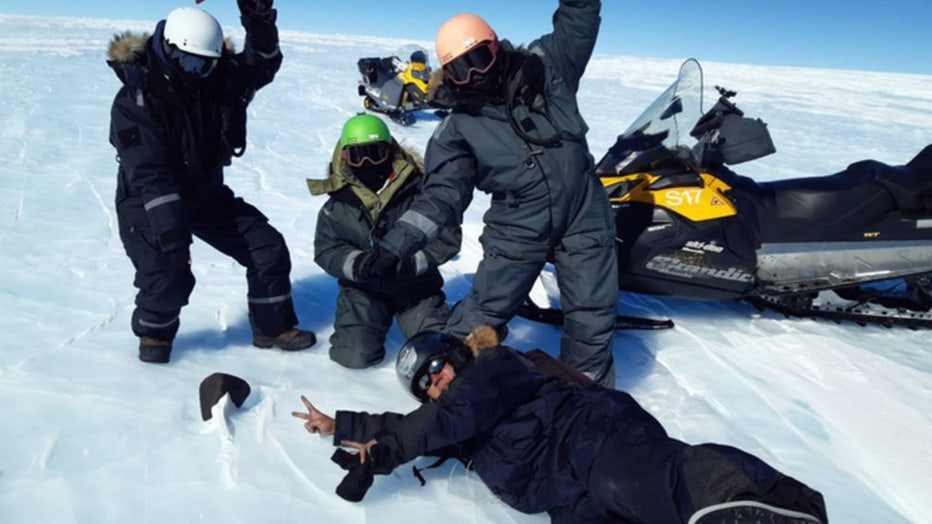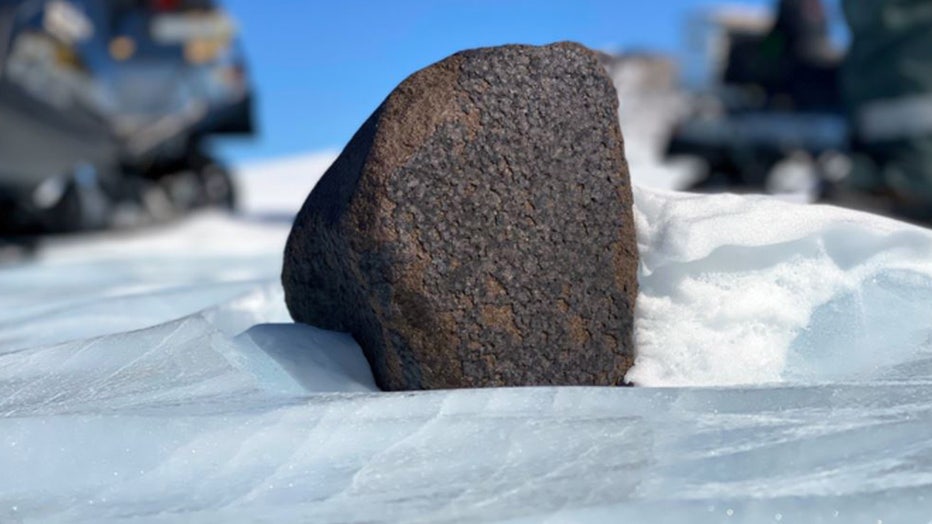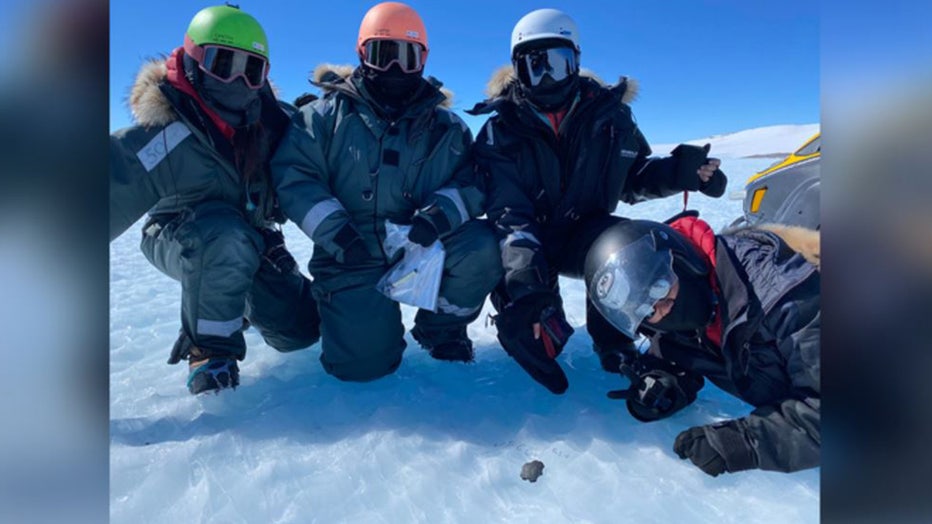Hefty meteorite containing materials billions of years old found by researchers in Antarctica

Meteor showers explained: what to know and how to watch
We call them shooting stars, but it's actually meteors that create dazzling streaks of light across our night sky. (FOX Weather)
Researchers made an out-of-this-world discovery in Antarctica's frozen landscape when they found a nearly 20-pound meteorite that contains some of the oldest materials in our solar system lying among the snow and ice.

The researchers with their 16.7-pound find. White helmet: Maria Schönbächler. Green helmet: Maria Valdes. Black helmet: Ryoga Maeda. Orange helmet: Vinciane Debaille. (Chicago Field Museum)
According to the Chicago Field Museum, Antarctica's landscape is ideal for meteorite hunting because the black space rocks stick out like a sore thumb against the snowy fields. Even when they sink into the ice, the glaciers' churning motion against the rock below helps to re-expose the meteorites near the surface of the continent's blue ice fields.
Recently, a team of researchers who just returned from Antarctica can confirm the continent's meteorite-hunter friendliness as they returned with five new meteorites, including one that weighed 16.7 pounds.

The 17-pound meteorite found in Antarctica. (Chicago Field Museum)
"Size doesn't necessarily matter when it comes to meteorites, and even tiny micrometeorites can be incredibly scientifically valuable," Maria Valdes, a research scientist at the Chicago Field Museum and the University of Chicago, said in a statement. "But of course, finding a big meteorite like this one is rare and really exciting."
Valdes estimated that of the roughly 45,000 meteorites retrieved from Antarctica over the past century, only about 100 or so are this size or larger.
DOORBELL CAM CATCHES FIREBALL SHOOTING THROUGH SEATTLE SKY

A researchers with one of the meteorites discovered in Antarctica. (Maria Valdes/Chicago Field Museum)
Valdes was among four scientists on the meteorite-hunting mission led by Vinciane Debaille of the Université Libre de Bruxelles (ULB). The research team also included Maria Schönbächler of ETH-Zurich and Ryoga Maeda of the ULB.
They were the first to explore the potential new meteorite sites mapped using satellite images by Veronica Tollenaar, a thesis student in glaciology at the ULB.

Researchers with one of the meteorites discovered in Antarctica. (Maria Valdes/Chicago Field Museum)
"Going on an adventure exploring unknown areas is exciting," Debaille said. "But we also had to deal with the fact that the reality on the ground is much more difficult than the beauty of satellite images."
The five meteorites discovered by the team will be analyzed at the Royal Belgian Institute of Natural Sciences. In addition, the sediment potentially containing tiny micrometeorites was divided among the researchers for study at their institutions.

